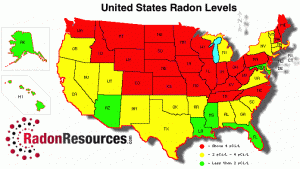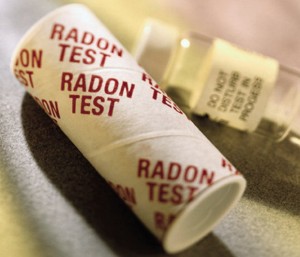Did you know, there’s a pretty good chance that your home may be silently killing you and your family? Worse yet, you’d be none the wiser, until many years or decades from now when you contract lung cancer as a result? Does that sound like something straight out of your worst fantasies — or one of them anyway?
Your Home May Be Killing You with Radon Gas
Believe it or not, it could be very true. One in fifteen homes in the US have elevated levels of radon gas inside. More than 21,000 Americans die each year due to radon-induced lung cancer. Furthermore, radon is the second leading cause of lung cancer in everyone — the first in non-smokers. Point being, it’s a pretty significant problem for everyone, not just a select few.
There’s a common misconception about radon gas that it’s no longer an issue anymore, or that it only exists in certain parts of the country. It is still very much an issue, even with modern construction measures designed to keep the deadly gas out. Yes, that means homes with radon resistant construction are still susceptible to the deadly gas. It can still seep inside.
As for the gas only being a problem in certain areas of the country, that’s way off. Radon gas is produced as a natural decay product of various elements like Uranium. Unfortunately, these elements happen to exist in the soil and rock under our feet. Because radon gas is extremely dense, it can seep up out of the ground and collect in closed in areas right above it. In the open air and outside, this isn’t a problem as the gas dissipates becoming less of a danger. However, it can seep into homes through cracks in the foundation, walls and flooring and collect in great abundance. Once it collects in concentrated amounts, it can cause serious harm to your lungs and your body.
The recommended action limit for Radon is 4.0 picocuries per liter (pCi/L) as set by the US EPA. However, if you were to live in a house with exactly 4.0 pCi/L of radon gas, you would be exposing yourself to the equivalent of smoking nearly a half a pack of cigarettes per day. For every additional 15 pCi/L tacked on to that, it’s equal to another full pack of cigarettes.
 Many homes have been found to contain radon gas levels of 40 pCi/L and higher. Just try and wrap your brain around how risky that is, and how much it increases the risk that residents exposed to that much radon gas would get lung cancer. Needless to say, the risk is pretty high.
Many homes have been found to contain radon gas levels of 40 pCi/L and higher. Just try and wrap your brain around how risky that is, and how much it increases the risk that residents exposed to that much radon gas would get lung cancer. Needless to say, the risk is pretty high.
To make matters worse, even if you’ve never smoked a day in your life the risk is still there. Of course, if you do smoke and you are also exposed to elevated levels of radon gas your risk for lung cancer more than doubles.
That’s not even taking into account the dozens — if not hundreds — of pulmonary illnesses and problems radon gas can produce. While there are studies out there that show exposure to radon can do more than just cause lung cancer, there isn’t nearly enough information to know everything the deadly gas can do to your body.
Test Your Home for Radon ASAP
So, what can we do about it? Luckily, the action process is relatively simple and fairly inexpensive.
 Since radon gas is odorless, colorless and tasteless — making it virtually indetectable — the only way to discover its presence is to test specifically for it. On that note, you can purchase a DIY radon testing kit at any local hardware store or online. If you’re afraid you’re going to botch the job, or just plain don’t want to do it yourself, you can always hire a local radon professional to come to your home and do it for you.
Since radon gas is odorless, colorless and tasteless — making it virtually indetectable — the only way to discover its presence is to test specifically for it. On that note, you can purchase a DIY radon testing kit at any local hardware store or online. If you’re afraid you’re going to botch the job, or just plain don’t want to do it yourself, you can always hire a local radon professional to come to your home and do it for you.
If elevated levels are discovered, action must be taken to reduce the amount of gas collecting in your home. This can be done by installing a mitigation system, which essentially ventilates the radon gas out into the open air where it’s no longer concentrated and dangerous. While homeowners can always install their own mitigation system, we do not recommend it under any circumstances. You’re much better off hiring a certified radon contractor to install the mitigation system for you. In this way you can be sure it’s installed and working correctly. It’s also worth noting that subsequent testing may be necessary to ensure the mitigation system is working.
The sooner you test, the better off you and your family will be. Your home could very well be killing you as you read this, and you may never even know. Don’t take the chance. Test your home now. It only takes a few days to weeks — depending on whether you conduct a long or short term test — and your results will surely give you peace of mind.



